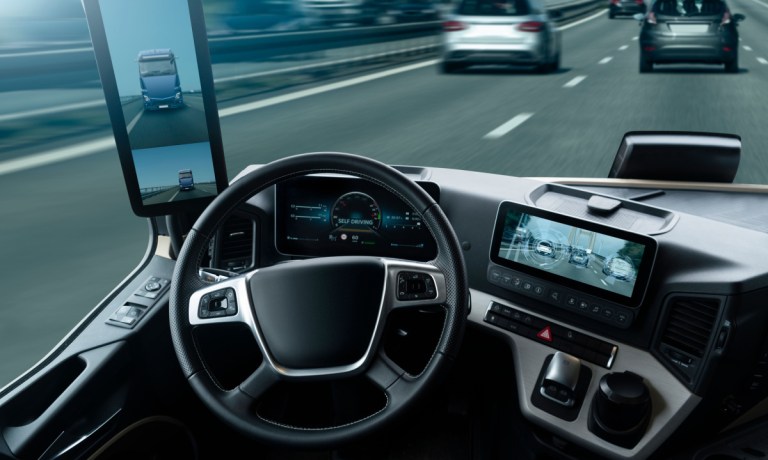
Mobility technology firm Continental and self-driving technology company Aurora Innovation have finalized the design of a scalable autonomous trucking system and plan to start production in 2027.
Finalizing the design and architecture of the future fallback system and hardware of the Aurora Driver autonomous driving system is the companies’ latest step in their plans to commercialize autonomous trucks at scale, Continental and Aurora said in a Friday (Jan. 5) press release.
“Technologies for autonomous mobility present the biggest opportunity to transform driving behavior since the creation of the automobile,” Philipp von Hirschheydt, executive board member for the Automotive Group sector at Continental, said in the release. “Achieving this milestone puts us on a credible path to deploy easy-to-service autonomous trucking systems that customers demand.”
The fallback system — a secondary computer that can take over operation of a vehicle if the primary system fails — is expected to go into production in 2027, according to the release.
The finalized design comes less than a year after Continental and Aurora partnered to develop high-volume manufacturing of autonomous trucking systems, the release said.
Having developed the system architecture, the companies plan to build and test initial versions of the hardware in 2024 and 2025, start production and integrate the hardware into autonomous-ready vehicles in 2026 and 2027, and deploy thousands of trucks integrated with Aurora Driver in 2027 and beyond, per the release.
“From day one, we knew we’d need to build a strong ecosystem of partners to bring this technology to market safely and at a commercial scale,” Chris Urmson, co-founder and CEO at Aurora, said in the release. “Finalizing the design of our future hardware is a meaningful step toward making the unit economics of the Aurora Driver compelling and building a business for the long term.”
In another recent development in this space, Uber Freight and Waabi, a builder of generative artificial intelligence (AI) and simulation for autonomous driving, said in September that they have partnered to accelerate the deployment of AI-powered autonomous trucks at scale.
That partnership aims to deliver a turnkey Driver-as-a-Service solution that will provide carriers of all sizes with the services and infrastructure to deploy, maintain and manage their autonomous vehicles seamlessly.